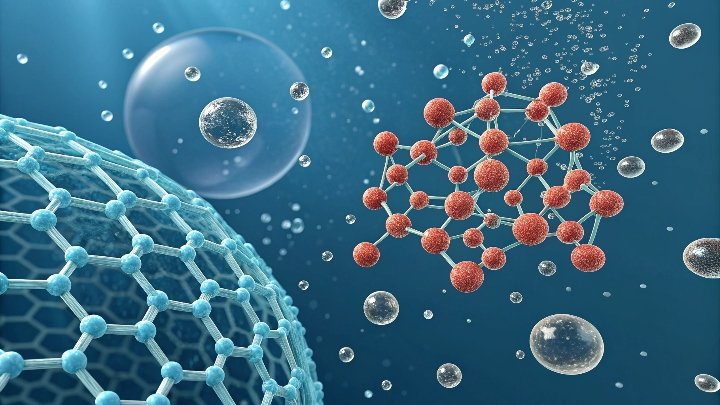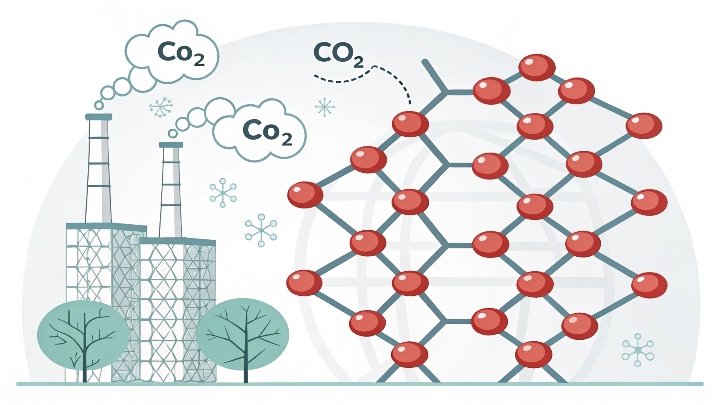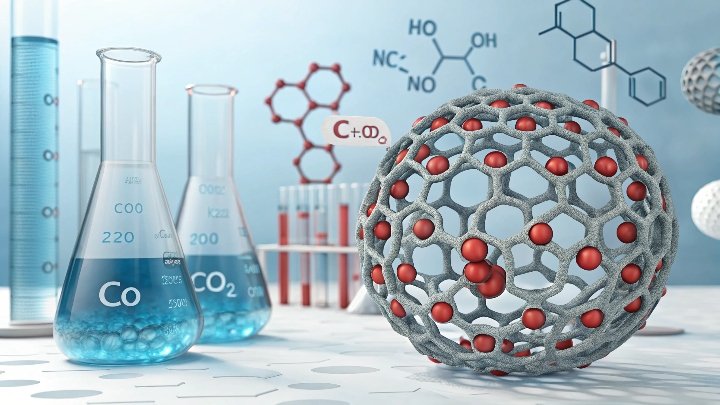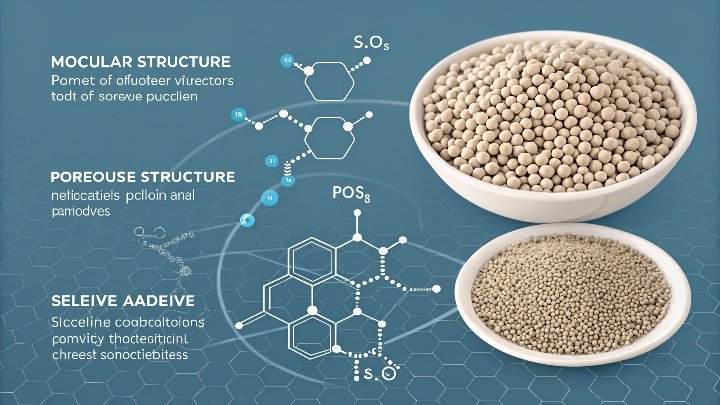I often see confusion about molecular sieve sizes. People assume one size fits all. That confusion can lead to poor performance in industrial applications.
Molecular sieve size matters because it directly affects selectivity, adsorption capacity, and overall efficiency. Each pore dimension targets specific molecules, making thoughtful selection critical for achieving consistent results.
I want to share my experiences with different sieve sizes and guide you through the core considerations. I believe that understanding these nuances can empower you to make smarter decisions. Let us dive deeper.
The Science Behind Molecular Sieve Sizing?
Whenever I explore the science of molecular sieve sizing, I see how pore dimensions control selectivity and capacity. Even slight differences matter for efficient separation or purification.
Pore sizes in molecular sieves are the key to capturing or rejecting specific molecules. They govern how each sieve interacts with targeted compounds, ensuring an optimal fit for your desired outcome.
How Pores Affect Adsorption
I have learned that the fundamental science of molecular sieve sizing revolves around microscopic channels. These channels are measured in angstroms and define which molecules can enter. If the pores are too large, then undesired compounds slip in. If they are too small, some targeted molecules will not be adsorbed. This balance is delicate. Yet it is vital for processes such as drying gases, purifying liquids, and separating chemical mixtures.
Pore Distribution and Uniformity
My experience tells me that uniform pore distribution is often more important than the average pore size. If a sieve has inconsistent pores, it leads to unpredictable adsorption behavior. I have seen cases where two sieves with identical average pore sizes performed very differently because one had better consistency in its pore structure.
Common Sieve Types and Dimensions
Here is a brief table showing some typical molecular sieve sizes and their primary applications:
| Sieve Type | Approximate Pore Size | Common Application |
|---|---|---|
| 3A | 3 Å | Drying polar molecules |
| 4A | 4 Å | General gas dehydration |
| 5A | 5 Å | Removal of normal paraffins |
| 13X | ~10 Å | Air separation, CO2 removal |
Each type targets specific applications based on pore size. But in practice, you must not assume that the listed pore size is rigid. The real-world structure might be slightly different. That is why lab testing and vendor support play big roles in selecting the right product. Over time, I have seen how fine-tuning these specifications can mean the difference between mediocre and top-tier performance. Pore size is not a single number. It is an entire distribution curve that shapes adsorption efficiency.
I always tell professionals in my network that understanding these fundamentals is the first step. When you see how the science underpins everything, you start making more informed choices. This sets the stage for exploring how sieve size affects performance in real-world scenarios.
How Molecular Sieve Size Impacts Performance?
I talk to many peers who want maximum adsorption. But they often overlook how even small pore size adjustments can affect selectivity and throughput.
Choosing the right sieve size can improve performance and reduce energy demands. It can also prevent product contamination, giving you a stronger return on investment.
Balancing Capacity and Selectivity
My hands-on work with various industrial setups has shown me that performance hinges on how well a molecular sieve balances capacity and selectivity. If I pick a sieve with very large pores, it might capture a wide range of molecules but risk saturating too quickly. This leads to shorter regeneration cycles and increased operating costs. On the other hand, smaller pores might offer high selectivity for specific molecules, but they can miss valuable opportunities to adsorb certain compounds or produce undesired pressure drops.
Adsorption Isotherms and Breakthrough Curves
I remember analyzing countless adsorption isotherms to find that sweet spot for pore size. Adsorption isotherms help predict how a sieve will behave under different conditions. A narrower pore structure can lead to steeper breakthrough curves. That means once capacity is reached, contaminants start slipping through fast. This can surprise you if you are not prepared. By aligning the isotherm data with actual operating conditions, I can choose a sieve size that gives a gradual breakthrough, letting me plan regeneration better.
Impact on Process Efficiency
There is another angle I always consider: process efficiency. In many cases, molecular sieves are not working alone; they are part of a bigger separation or purification chain. If the adsorbent is not right, it can cause bottlenecks downstream. It can demand more frequent maintenance or produce inconsistent product quality. For instance, if I use a sieve that is too coarse for a tight specification, I may fail to meet purity targets. Alternatively, if I use one that is too fine, I might degrade flow rates and increase pressure differentials.
| Key Factor | Effect on Performance |
|---|---|
| Pore Size Uniformity | Predictable adsorption behavior |
| Selectivity | Targets specific molecules effectively |
| Capacity | Determines how much is adsorbed |
| Regeneration Frequency | Affects operational costs |
| Pressure Drop | Influences energy consumption |
I have found that a well-chosen molecular sieve size can significantly reduce unplanned downtime. It can also minimize wasted energy. Sometimes, the difference is subtle but measurable. Even slight improvements in pore structure uniformity can boost overall yields. From my perspective, all these factors highlight why it is not enough to choose a random sieve. Instead, you must weigh the trade-offs between capacity, selectivity, and system demands.
I believe that continuous monitoring and open communication with suppliers is key. If you notice a shift in performance, investigate if the pore size distribution has changed. Sometimes, contamination or structural degradation can alter your sieve. In these cases, timely replacement or specialized regeneration strategies can help you stay on top of your process goals.
Industry-Specific Considerations for Molecular Sieve Selection?
Many industries seek distinct outcomes from molecular sieves. I see variations in gas separation, petrochemical processes, and even pharmaceutical applications. The choice of sieve size must align with your specific sector needs.
Different industries prioritize different specs. One size does not fit all. By tailoring pore sizes, industries can meet purity standards and sustainability goals.
Adapting to Application Demands
Over the years, I have encountered a range of use cases that illustrate just how critical it is to match sieve size to the industry. For example, in air separation plants, the goal is to remove moisture or carbon dioxide before cryogenic distillation. If I pick a sieve with suboptimal pores, it can lead to icing or equipment damage. Meanwhile, in petrochemical applications, certain sieves are chosen to separate normal paraffins from isoparaffins, which can significantly improve product yield and reduce waste. The difference often comes down to angstrom-level adjustments.
Pharmaceutical and Fine Chemicals
My work in pharmaceuticals taught me that the purity demands can be extremely strict. Some molecular sieves must remove tiny amounts of residual water or organic contaminants. I once worked on a project where we tested various 3A and 4A sieves. We found that even minor variations in actual pore size impacted final product quality. In such sensitive applications, uniformity and consistency overshadow theoretical pore size. Checking the uniformity can make or break your compliance with regulatory standards.
Customized Solutions and Emerging Trends
I also noticed a shift toward customized solutions. Nano-sized sieves and hierarchical structures are gaining traction. They offer unique pore architecture that targets multiple molecule sizes in one pass. This can improve efficiency and reduce the number of steps in a separation process. In my professional opinion, this trend is likely to continue. Everyone wants to optimize for complex tasks without adding multiple stages of separation. That is where advanced materials step in.
I believe that we are already seeing the adoption of new screening technologies that help evaluate the performance of these specialized sieves. Labs now use advanced imaging techniques to see pore uniformity at the nanoscale. This better understanding leads to more precise manufacturing controls. The result is a new generation of molecular sieves that are not just about having a certain average pore size, but about sculpting the entire pore network to match a specific industry need.
Below is a short table highlighting various industries and key considerations for each:
| Industry | Key Sieve Criteria | Main Purpose |
|---|---|---|
| Air Separation | Stable moisture removal | Prevent freezing in cryogenic processes |
| Petrochemicals | Precise paraffin separation | Maximize yield and minimize waste |
| Pharmaceuticals | Extreme uniformity | Ensure high product purity |
| Fine Chemicals | Targeted byproduct removal | Improve reaction selectivity |
In my opinion, success comes from knowing exactly what you need in terms of pore size, adsorption capacity, and regeneration requirements. Then, you coordinate with a supplier who can provide consistent quality. I have seen big gains from ongoing testing and re-validation. Industries that invest in these steps often outpace those that rely on generic solutions.
Reflecting on my experiences, I am certain that the future lies in tailoring molecular sieves to each industry's unique demands. The technology is evolving rapidly, and those who adapt will thrive. Staying ahead means adopting greener production methods, exploring hybrid materials, and never settling for one-size-fits-all solutions.
Conclusion
I see that the right molecular sieve size is about balance, alignment with real needs, and a willingness to adapt.






